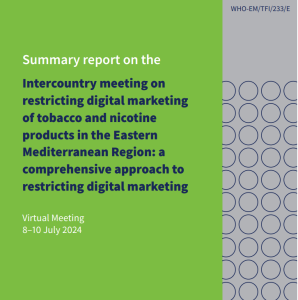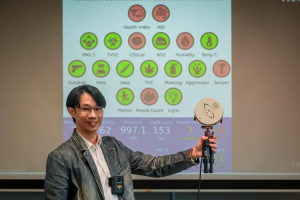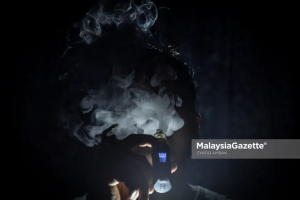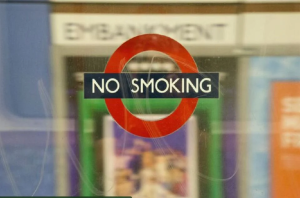Carmen C.W. Lim PhD 12, Tianze Sun PhD 12, Wayne Hall PhD 1, Coral Gartner PhD 2, Jason P. Connor PhD 13
Introduction
Research has linked youth exposure and engagement with tobacco-related content on social media to behavioral changes; however, there is a lack of studies exploring the source and types of such content and their impact on youth’s susceptibility to tobacco use. This study examined the association between the type and source of content posted on social media and susceptibility to tobacco use, defined as curiosity or intention to use tobacco or e-cigarettes.
Methods
Data were from the Population Assessment Tobacco and Health study, a nationally representative cohort study of U.S. youth (n=5,652). This analysis conducted in March 2024, focused on Wave 6 (2021), examining youth who used social media in the past month and did not use cigarettes or e-cigarettes. Multivariable logistic regression was performed to evaluate the associations.
Results
Of the youth who had used social media in the past month (88.7%), 61.4% had encountered tobacco-related content. Exposure to such content was associated with greater susceptibility to e-cigarette use (OR=1.49, 95% CI: 1.38–1.62) and cigarette use (OR=1.29, 95% CI: 1.17–1.43). Daily or near-daily exposure to tobacco-related content compared to non-exposed respondents was associated with greater odds of susceptibility to tobacco use (OR=1.53, 95% CI: 1.37–1.71). Only posts made by celebrities and influencers were associated with a greater susceptibility to tobacco use.
Conclusions
Regular exposure to tobacco-related content on social media, particularly content shared by celebrities and social media influencers, was associated with susceptibility to tobacco use. These findings underscore the need for targeted interventions to mitigate the effects of social media influencers on youth.
INTRODUCTION
The online content that promotes tobacco and e-cigarette products, the majority of which is not age-restricted to minors,1,2 has increased in recent years.1,3 Tobacco products are heavily promoted through paid influencer endorsements, often done without disclosures of financial interest,2 which can normalize and glamorizes use, targeting vulnerable populations like young people and ethnic minorities.4 Other contents such as news coverage can shape perceptions though framing,5 and organic posts from friends can influence behavior through social proof.6 Many studies have demonstrated a link between youth exposure to tobacco-related content on social media platforms and their subsequent use,7 yet few studies8 have examined the source and types of tobacco and e-cigarette content to which youth are exposed and its impact on curiosity and intention to use these products. Curiosity and intention to use are indicators of susceptibility to tobacco use and have been shown to be a robust predictor of experimentation and regular use.8, 9, 10 This study aimed to examine the association between the type and source of content posted on social media and susceptibility to tobacco or e-cigarette use utilizing data from the Population Assessment Tobacco and Health (PATH) study.
METHODS
The PATH study is a nationally representative longitudinal cohort study that examines tobacco use and its impact on the health of individuals (aged 12 years and older) in the United States. The PATH study employs a four-stage, stratified probability design, initially selecting participants from counties and segments, and then randomly choosing up to two young people from residential households to answer the survey. This study examined data from Wave 6 (2021), involving 5,652 youth aged 12–17 years. The weighted response rate for the Wave 6 sample is 56.6%. Detailed information of the PATH study can be found elsewhere.11 This study used deidentified data and was exempted by the University of Queensland Institutional Review Board (Ref: 2024/HE000059).
Perceived exposure to tobacco and e-cigarette use was measured by asking how often participants saw posts on social media related to tobacco products (including e-cigarettes and electronic nicotine delivery system products) in the last 30 days, with options ranging from “Never” to “Several times a day.” Two variables were created for the analysis: (1) self-reported exposure to tobacco and e-cigarette content (“Yes” if seen at least once in the last 30 days, versus “No”); (2) frequency of exposure (“Daily or near-daily,” “At least a few times in the past month,” or “Not exposed”). Respondents also indicated the type of tobacco-related content seen on social media, such as posts of people using or talking about the product, advertisements promoting the use of the products, warnings about the harm of the products, and news. Respondents also named the source of tobacco-related content seen on social media, including people they know in real life, online friends they have not met in real life, celebrities or social media influencers, brands or sellers of products, news sources, or others. Responses were dichotomized for each item (“Yes” or “No”). Curiosity to use e-cigarettes or cigarettes was assessed by asking, “Have you ever been curious about [using an electronic nicotine product/smoking a cigarette]?” Responses ranged from “Very curious” to “Not at all curious” and were dichotomized into any curiosity versus not at all curious. Intention to use e-cigarettes or cigarettes was measured with questions about the likelihood of use in the next year or soon with responses from “Definitely yes” to “Definitely not.” Responses were categorized into “Yes” for potential positive intent (combining “definitely yes,” “probably yes,” “probably not”) and “No” for no intent (“definitely not”). Since curiosity and intention to use are indicators of susceptibility to tobacco use,8, 9, 10 these measures are combined into a single outcome. This approach is supported by the significant positive moderate correlation between curiosity and intention to use (Φecigarettes = 0.462, p<0.001; Φcigarettes = 0.344, p<0.001), indicating that these constructs are distinct and related. Participants were categorized as “Yes” if they showed any curiosity or intent to use the product and “No” if they expressed neither. Covariates in this study included age group, sex, race, and academic performance. Detailed information can be found in the public use codebook.
Analyses were performed using SAS 9.4, with estimates weighted using the recommended Wave 4 cohort single-wave weights through the balanced repeated replications method with Fay’s adjustment of 0.3 to account for the complex survey design. All analyses were restricted to youths aged 12–17 who had used social media in the past month and had never used e-cigarettes or cigarettes, depending on the specific analysis. Multiple imputation-chained equations (5 imputations) were used to impute the missing values for the covariates. Multivariable logistic regression models were used to examine the relationship between the type and source of tobacco-related content and curiosity toward and intention to use, controlling for covariates. This study followed the STROBE guidelines. The analysis was preregistered on the Open Science Framework (https://osf.io/nrp9u/).
RESULTS
Most youth had used social media in the last 30 days (5,011/5,652=88.7%), and 61% reported being exposed to tobacco or e-cigarette content on social media (3,077/5,011=61.4%) (Table 1). Approximately 28% (1,402/5,011) of youth who used social media and did not use cigarettes or e-cigarettes were susceptible to e-cigarette and/or cigarette use. Table 2 shows that self-reported past month exposure to tobacco or e-cigarette content was associated with greater odds of susceptibility to e-cigarette or cigarette use (OR: 1.42, 95% CI: 1.31–1.54). Additionally, youth who were exposed daily or nearly daily to promotional content on social media were more susceptible to e-cigarette or cigarette use compared to non-exposed respondents (OR: 1.53, 95% CI: 1.37–1.71). In terms of the type of content viewed, only posts of people talking about tobacco or e-cigarette products were associated with susceptibility to use e-cigarettes (OR: 1.24, 95% CI: 1.11–1.41), but not cigarettes (OR: 1.10, 95% CI: 0.98–1.24). When examining the source of online content, posts by celebrities and influencers were associated with 1.3 times the odds of susceptibility compared with noncelebrity or influencer posts (ORsusceptibility to e-cigarettes: 1.30, 95% CI: 1.09–1.56; ORsusceptibility to cigarettes: 1.28, 95% CI: 1.07–1.54). In contrast, there were no associations between content that included advertisements, health warnings, or news about e-cigarettes or tobacco products, and susceptibility to e-cigarette or cigarette use.
Table 1. Sample Characteristics
| Empty Cell | Social media | Susceptibility to e-cigarette and cigarette use | |||
|---|---|---|---|---|---|
| Empty Cell | Use social media in the last 30 days (n=5,011) | Exposure to e-cigarette or cigarette content on social media in the last 30 days (n=3,077) | Curiosity or intention to use e-cigarettes (n=959) | Curiosity or intention to use cigarettes (n=958) | Curiosity or intention to use cigarettes or e-cigarettes (n=1,402) |
| Demographics | No. (%) [SE]a | No. (%) [SE]a | No. (%) [SE]a | No. (%) [SE]a | No. (%) [SE]a |
| I. Age group | |||||
| 12–14 years old | 1,083 (26.5) [0.5] | 615 (24.7) [0.9] | 232 (30.6) [1.9] | 253 (32.1) [1.7] | 339 (30.1) [1.5] |
| 15–17 years old | 3,928 (73.5) [0.5] | 2,462 (75.3) [0.9] | 709 (69.4) [1.9] | 686 (67.9) [1.7] | 1,038 (69.9) [1.5] |
| II. Sex | |||||
| Male | 2,576 (50.3) [0.3] | 1,519 (48.2) [0.7] | 455 (47.9) [1.4] | 466 (48.8) [1.8] | 660 (47.3) [1.2] |
| Female | 2,416 (49.7) [0.3] | 1,546 (51.8) [0.7] | 483 (52.1) [1.4] | 467 (51.2) [1.8] | 710 (52.7) [1.2] |
| III. Raceb | |||||
| White alone | 3,175 (67.2) [0.5] | 2,027 (69.3) [0.7] | 613 (68.8) [1.6] | 626 (71.3) [1.9] | 902 (69.6) [1.4] |
| Black alone | 697 (15.5) [0.3] | 380 (13.9) [0.6] | 116 (13.4) [1.3] | 87 (9.9) [1.1] | 159 (12.5) [1.0] |
| Other | 835 (17.3) [0.6] | 503 (16.8) [0.7] | 159 (17.8) [1.3] | 164 (18.8) [1.7] | 234 (17.9) [1.2] |
| IV. Academic performance at school | |||||
| Above average (As and Bs) | 4,130 (84.3) [0.5] | 2,567 (85.0) [0.7] | 791 (85.8) [1.3] | 768 (84.4) [1.2] | 1,136 (84.7) [1.0] |
| Average (Cs) | 261 (5.0) [0.3] | 153 (4.8) [0.4] | 40 (3.9) [0.7] | 41 (3.8) [0.7] | 64 (4.3) [0.6] |
| Below average | 535 (10.1) [0.5] | 308 (9.5) [0.6] | 96 (9.2) [1.0] | 111 (10.6) [1.0] | 152 (10.0) [0.9] |
| Ungraded | 36 (0.7) [0.1] | 23 (0.7) [0.2] | 9 (1.1) [0.4] | 9 (1.1) [0.4] | 12 (0.9) [0.3] |
| V. Total household income | |||||
| Less than $10,000 | 284 (5.5) [0.4] | 158 (4.7) [0.4] | 43 (4.8) [0.9] | 36 (3.6) [0.7] | 62 (4.5) [0.7] |
| $10,000–$24,999 | 549 (10.5) [0.5] | 333 (10.5) [0.7] | 111 (10.7) [1.1] | 93 (9.0) [1.0] | 149 (9.9) [0.9] |
| $25,000–$49,999 | 963 (18.9) [0.6] | 547 (17.5) [0.8] | 159 (16.0) [1.2] | 163 (17.3) [1.6] | 239 (17.1) [1.1] |
| $50,000–$99,999 | 1,236 (26.0) [0.7] | 732 (25.2) [0.9] | 214 (23.7) [1.6] | 228 (25.3) [1.4] | 332 (25.1) [1.3] |
| $100,000 or more | 1,759 (39.1) [0.7] | 1,171 (42.1) [1.0] | 380 (44.8) [1.4] | 382 (44.8) [1.8] | 540 (43.4) [1.3] |
a. Percentages were calculated using survey weights.
b. The analysis used a derived “race” variable from the dataset, categorizing participants as follows: “white alone” for white, “black alone” for black or African Americans, and “other” for American Indian, Alaskan Native, Asian Indian, Chinese, Filipino, Japanese, Korean, Vietnamese, Other Asian, Native Hawaiian, Guamanian, Chamorro, Samoan, Other Pacific Islander. Information on Hispanic origin was collected separately. This study retained race because race and ethnicity variables are highly correlated and can cause multicollinearity in the regression models.
Table 2. Exposure to Tobacco-Related Content Online and Susceptibility to Tobacco Use
| Empty Cell | Curiosity or intention to use e-cigarettes among e-cigarette naïve youtha | Curiosity or intention to use cigarettes among cigarette naïve youthb | Curiosity or intention to use e-cigarettes or cigarettes among e-cigarettes and cigarette naïve youthc |
|---|---|---|---|
| In the last 30 days… | OR (95% CI)d | OR (95% CI)d | OR (95% CI)d |
| I. Exposure to tobacco or e-cigarette on social media | |||
| Yes | 1.49 (1.38–1.62) | 1.29 (1.17–1.43) | 1.42 (1.31–1.54) |
| No (ref) | 1.00 | 1.00 | 1.00 |
| II. Frequency of exposure to tobacco or e-cigarette products on social media | |||
| Daily or near-daily | 1.57 (1.40–1.75) | 1.41 (1.24–1.60) | 1.53 (1.37–1.71) |
| At least a few times in the past month | 1.47 (1.35–1.60) | 1.25 (1.12–1.39) | 1.38 (1.26–1.50) |
| Not exposed (ref) | 1.00 | 1.00 | 1.00 |
| III. Type of content exposed on social media | |||
| Post of people using or talking about tobacco or e-cigarettes products | |||
| Post of people using or talking about tobacco or e-cigarettes products | 1.24 (1.11–1.41) | 1.10 (0.98–1.24) | 1.21 (1.09–1.34) |
| People they knew | 1.24 (1.04–1.47) | 1.11 (0.88–1.39) | 1.21 (1.01–1.46) |
| People not real in life | 1.09 (0.90–1.32) | 1.15 (0.92–1.44) | 1.21 (1.01–1.46) |
| Celebrities and influencers | 1.30 (1.09–1.56) | 1.28 (1.07–1.54) | 1.26 (1.05–1.51) |
| Brand | 1.07 (0.89–1.28) | 1.03 (0.84–1.28) | 1.02 (0.85–1.22) |
| News | 0.97 (0.80–1.18) | 0.98 (0.79–1.22) | 0.94 (0.77–1.15) |
| Other | 0.87 (0.57–1.34) | 0.79 (0.47–1.36) | 0.84 (0.55–1.27) |
| Ads promoting or encouraging the use of the products | 1.08 (0.95–1.23) | 1.05 (0.91–1.21) | 1.06 (0.92–1.21) |
| Warning about the harms of the products | 0.86 (0.77–0.96) | 0.92 (0.81–1.05) | 0.87 (0.78–0.98) |
| News about the products | 0.93 (0.82–1.05) | 1.02 (0.87–1.21) | 0.96 (0.84–1.10) |
a
Multivariable logistic regression model regressing exposure to tobacco or e-cigarette-related content on social media on susceptibility towards e-cigarette use, adjusting for age, sex, academic performance, household income, and race.b
Multivariable logistic regression model regressing exposure to tobacco or e-cigarette-related content on social media on susceptibility towards cigarette use, adjusting for age, sex, academic performance, household income, and race.c
Multivariable logistic regression model regressing exposure to tobacco or e-cigarette-related content on social media on susceptibility towards e-cigarette use or cigarette use, adjusting for age, sex, academic performance, household income, and race.d
Boldface indicates statistical significance (p<.01). Significance level was evaluated at .01 level to adjust for multiple comparison.
DISCUSSION
This study supports the associations between youth self-reported exposure to tobacco or e-cigarette-related content and greater odds of susceptibility to using these products among youth who never used cigarettes or e-cigarettes.7 It also highlights that daily or near-daily exposure to tobacco-related content on social media is linked to greater susceptibility to use tobacco and e-cigarette products. Additionally, only content posted by celebrities and influencers that feature discussions about tobacco products was significantly associated with greater susceptibility toward e-cigarette and cigarette use. In an experimental study, young people were mostly skeptical about the authenticity and motives behind advertisements, but they showed greater receptiveness toward user-generated content.12 In another study, celebrity endorsers were also rated more highly on trustworthiness compared to noncelebrities, which is linked to favorable attitudes toward tobacco use.13 This study contributes to the literature by demonstrating the role of exposure frequency and the unique influence of user-generated content by celebrities.
Limitations
The limitation of this study is its cross-sectional nature, which limits our ability to infer causality. Self-reported measures could also subject to recall bias. The combined measure of “susceptibility” may obscure differences between curious individuals who may have no intention to use, and vice versa.
CONCLUSIONS
This study highlighted the link between youth exposure to tobacco or e-cigarette content on social media and their susceptibility to use these products, especially if the content is shared by celebrities and social media influencers. A dose-response relationship was observed, where increased frequency of exposure, particularly daily or near-daily exposure, was associated with susceptibility to use tobacco products among youth. Effective content moderation strategies that mitigate the negative effects of online pro-tobacco and e-cigarette content by social media influencers and celebrities are needed.
Acknowledgments
Funding: This study was supported by an NHMRC Investigator Fellowship (GNT2026806) awarded to CL. CG holds an ARC Future Fellowship (FT220100186), an NHMRC Centre of Research Excellence Grant (GNT1198301), an NHMRC Synergy Grant (GNT2019252), and has performed consultancy work for Healthcare Management Advisors (HMA) consultants on behalf of the Australian Government and contract research for World Health Organization. The National Centre for Youth Substance Use Research is supported by Commonwealth funding from the Australian Government provided under the Drug and Alcohol Program. The funders had no role in the conceptualization, design, data collection, analysis, decision to publish, or preparation of the manuscript.
Conflict of interest: No financial disclosures have been reported by the authors of this article.










